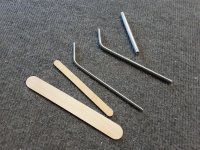Stuart Grant
Active Member
I am working on my RV-12 service bulletins for the fuel tank. My tank was factory built and I am putting in doublers (required later) as well as an optional vent and inspection port. It is very difficult to see and work inside and the tank that is basically a closed box with a round access hole. To help reduce the chance of leaks I am thinking of coating the corners and some of the seams and pull rivets with another layer of tank sealant over cured sealant before I seal the tank again. I have to do this by feel as I cannot see what I am doing inside the tank. Is this a bad idea? Is the second layer likely to detach and perhaps cause clogs or does new sealant stick well to cured sealant? I know slosh stuff is a no-no. The tank has never had fuel in it.





